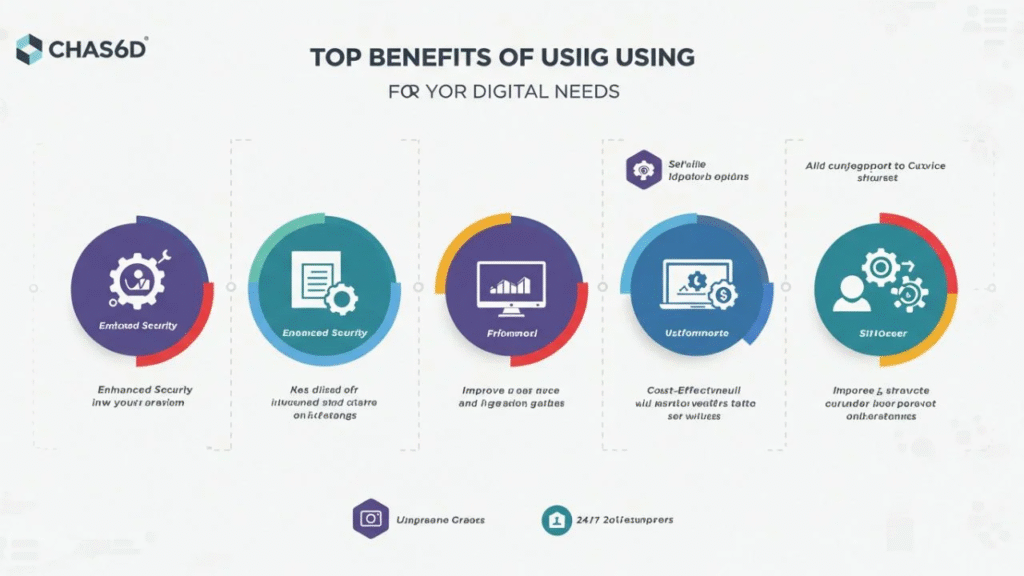Introduction
In the rapidly changing world of automation, artificial intelligence technological advancements, brand new models are continually being developed to explain how intelligent systems learn, think and adapt. A single of the more intriguing and futuristic concepts is the CHAS6D concept that stands for Cybernetic Hierarchical adaptive systems in six Dimensions. The concept combines cybernetics, system theory as well as adaptive intelligence, into a strong structure that can change the ways we build sophisticated systems within the new digital age.
What Is CHAS6D?

CHAS6D is a short form in the form of Cybernetic Hierarchical Systems in Six Dimensions, a mathematical model that describes how advanced robots, artificial intelligence and complex networks can learn to adapt, evolve, and grow across different dimensions of interaction and control.
In simple phrases, CHAS6D represents a six-dimensional model to build intelligent systems that analyse, adapt and enhance themselves by relying on feedback, similar to how biological and human systems function. It’s not all about automation. It’s all about self-evolution by utilizing feedback as well as hierarchy and adaptability.
The idea is derived drawn from cybernetics (the study of controlling and communicating), adaptive systems and the hierarchical structure and combines them to develop a comprehensive knowledge of the ways in which intelligence could develop and perform in complex environments.
Breaking Down the Term “CHAS6D”
To fully comprehend CHAS6D we must first look into every part of the phrase.
1. Cybernetic
Cybernetics studies control communications, feedback, and control in systems, whether mechanical, biological or digital. It is focused on the ways that systems self-regulate through feedback loops. In CHAS6D the cybernetic concept assures that the system is able to examine its environment, analyze its capabilities, and adjust its settings in a timely manner. It makes it more intelligent and autonomous.
2. Hierarchical
“Hierarchical” refers to the multi-layered structure of processing or control.
In CHAS6D the systems are organized on various level or layer each with each level’s own purpose and responsibilities. The higher levels supervise and regulate to the levels below, which is similar to how the human brain operates both subconscious and conscious processes.
This structure lets CHAS6D-based systems handle complicated decisions effectively and to maintain the stability of their systems while adjusting to changing conditions.
3. Adaptive
“Adaptive” refers to the “adaptive” part describes a system’s capacity to learn from previous experiences and adapt to changing conditions. In CHAS6D the concept of adaptability isn’t just reactive, it’s active. The system isn’t just responsive to external inputs, it predicts and changes by analyzing pattern patterns as well as internal algorithms.
This is similar to the way machines learn improve as they learn from data.
4. Systems
The word “systems” indicates that CHAS 6D isn’t a single component, but an interconnected system of interconnected pieces that work together.
Each part communicates with the other parts via feedback channels, forming a comprehensive system that can solve problems analysis, decision-making, and analysis.
5. In 6 Dimensions
“The “6 Dimensions” of CHAS 6D refers to the various layers or the axes of control and interaction which define its function.
Though interpretations might differ the dimensions usually represent:
- Physical Dimension The hardware (or physical) environment that the computer operates in.
- Dimension of Data Dimension The data flow and processing layer.
- Cognitive Dimension The ability to think or decision-making process.
- adaptive Dimension is the mechanisms for learning and evolution.
- Network/Social Dimension Interaction with other agents and systems.
- The Ethical/Goal dimension – The higher-order goal and moral basis that governs an organization’s decisions.
Together the six dimensions create an entire map of the ways in which intelligent systems could be present, work and grow in both virtual and real environments.
How CHAS6D Works
CHAS6D functions through the feedback system, the hierarchy and adaptive. It is a multi-layered brain which continuously gathers data, analyzes its performance and adapts its behavior according to the information it gathers.
- For input and sensing The system gathers data from its surroundings through sensors or inputs from digital devices.
- Processing and Analysis Data is processed over layers of hierarchy to detect patterns and identify changes.
- The Decision Making The system assesses the results and then determines the most appropriate solution or adjustment.
- Feedback Loops The system measures the impact of its actions, and then learns from the outcomes.
- adaptation Based on feedback, the system improves its methods and enhances its future choices.
The cycle continues for a long time and allows self-learning and development–a important feature that differentiates CHAS 6D from linear systems that are more traditional.
Applications of CHAS6D
The possibilities for CHAS 6D’s use are numerous. It has the potential to influence many areas, such as:
1. Artificial Intelligence and Machine Learning
CHAS6D is a framework to build layers of AI systems which can learn in a structured but flexible way.
It can improve deep learning models to improve the transparency of neural networks and enables AI agents to think across multiple environments simultaneously.
2. Robotics
For robotics applications, CHAS6D will allow robots to comprehend complicated surroundings, learn from feedback and control actions more effectively.
This leads to the development of self-adapting robotics that are able to effectively and safely with humans.
3. Smart Cities and Infrastructure

In smart cities, CHAS6D will help to manage interconnected systems, such as energy, traffic and security by making decisions that are adaptive using real-time data.
It ensures stability effectiveness, efficiency, and sustainability for large-scale operations.
4. Healthcare Systems
CHAS6D can provide adaptive healthcare systems that can personalize the treatment plan to patients.
By integrating data from a variety of sources (genetic as well as environmental and behavioral) these systems are able to give accurate diagnoses and provide predictive treatments.
5. Cybersecurity
In the field of cybersecurity, CHAS6D provides security systems that are adaptive that detect and react to threats on a regular basis.
Instead of following a set of guidelines, the systems are able to evolve to defend against new types of cyberattacks, in real time.
6. Education and Learning Systems
CHAS6D is a tool that can be utilized to build adaptable learning systems which adapt to each student’s individual learning style and speed and provides personalized learning experiences.
Benefits of CHAS6D

Implementing CHAS6D can bring many benefits:
- Self-learning and adaptive Continuous improvement, with no manual update.
- Effectiveness and optimization – Intelligent use of resources and energy.
- Resilience Resilience – ability to overcome unexpected problems or changes.
- Scalability Expansion across multiple platforms or domains.
- Ethics awareness In the sixth dimension of HTML0, it is able to be able to align goals with ethical or social values.
In the end, CHAS6D provides the foundation for truly autonomous, intelligent systems that develop responsibly and effectively.
CHAS6D and Artificial Intelligence

AI as well as CHAS6D are inextricably linked. While AI concentrates on enhancing the intelligence of machines, CHAS6D lays out the the fundamentals for how intelligence can function and develop.
The traditional AI system is usually restricted by their training data and are unable to change when the environment changes.
CHAS6D solves this issue by using the concept of hierarchical adaption–allowing it to change its learning strategies to adapt to new circumstances. This means that AI isn’t just better at its job, it also becomes more aware of the ways to enhance itself.
In the near future, CHAS6D could play a important role in the creation of artificial general intelligence (AGI)–machines capable of human-like reasoning as well as adaptability to different areas.
Challenges of CHAS6D
Although CHAS6D is an impressive concept however, its implementation comes with difficulties:
- Complexity The creation of adaptive structures that are six dimensions requires sophisticated algorithms and massive processing power.
- data integrity The model is based heavily on data of high-quality for feedback and for learning.
- Ethics Concerns As systems get more autonomous, it is essential to ensure that moral alignment is maintained.
- Integration – Connecting CHAS6D-based devices to existing infrastructure could be difficult.
- security risks Adaptive systems may get targeted by nefarious parties seeking to take advantage of its learning mechanism.
In order to overcome these challenges, we need an intense collaboration among AI research, ethicalists and engineers.
The Future of CHAS6D

As AI advances, CHAS6D could become a important structure for future-generation automated system.
Its capability to combine the concepts of hierarchical controlling, asynchronous feedback along with adaptive-learning is a potent design guideline for creating systems that are not just responsive to their surroundings but also change in a way that is intelligent.
In the near future we might observe CHAS6D impacting everything from autonomous cars and intelligent industries, to quantum computing as well as space exploration. It’s a first way to create machines that can think, change and evolve, much like living creatures.
Conclusion
CHAS6D (Cybernetic Hierarchical Adaptive Systems in Six dimensions) is more than an abstract term, it’s a concept of how technology, intelligence and adaptability could be incorporated into a single, unified model. Combining cybernetic principles and the principles of hierarchical understanding and six levels of interactivity, CHAS6D outlines the future of intelligent, self-evolving systems.
In the field of robotics, AI and beyond The framework can alter the way we construct and manage our interactions with the latest technologies. As technology advances, CHAS6D could become the basis for the next generation in adaptive intelligence–a future where systems are not merely automated, but actually conscious of their surroundings, are resilient, and constantly evolving.
FAQs
What is CHAS6D refer to?
CHAS6D is the acronym for Cybernetic Hierarchical and Adaptive Systems in Six Dimensions. It is a description of a model which combines cybernetic control dynamic learning and hierarchical organizational to build intelligent systems that are capable of self-improvement and development over six dimensions.
2. What is the objective of CHAS6D?
The principal goal for CHAS6D is to build systems that are able to analyse, adjust and develop through continuous feedback and hierarchical-learning. It assists robotics, artificial intelligence and data systems to become more effective, autonomous and intelligent over time.
3. What are the dimensions of CHAS6D?
The six dimensions are generally used to are used to represent:
- Physical Dimension The hardware or the environment within the structure.
- Information Dimension The layer that communicates and stores information.
- Cognitive Dimension The layer of thinking and decision-making.
- The Adaptive Dimension A process of learning and evolution.
- Network/Social Dimension – how the system interacts other systems.
- Ethics/Goal Dimension – The goal and values or objectives that guide its behavior.
All of these measurements permit systems like CHAS6D to work efficiently in complex environments.
4. What is the difference between CHAS6D differ from conventional AI systems?
Traditional AI systems typically depend on fixed algorithms as well as data sets.
In contrast, CHAS6D introduces feedback loops that are adaptive and hierarchical learning that allow systems to change and adapt its behaviour without continuous human input. This is a step towards more self-aware and self-improving artificial intelligence.
5. Where can CHAS6D apply?
CHAS6D is a suitable technology for various industries, such as:
- Artificial Intelligence & Machine Learning for advanced self-learning systems.
- Robotics Create robots that are able to adapt to changing environments.
- Smart Cities – To control energy, traffic and communication systems.
- Healthcare for predictive diagnostics and individualized treatment.
- Cybersecurity for an adaptive and proactive threat detection.
- Education To create innovative and personalized learning platforms.



